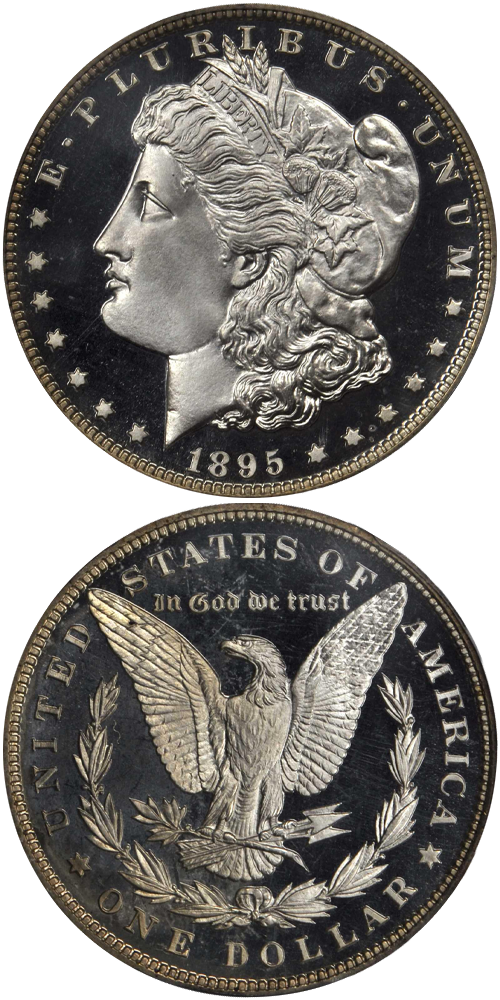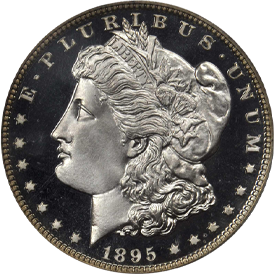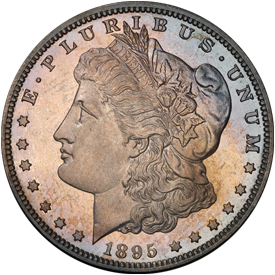Designed by: George T. Morgan
Issue Dates: 1878-1904, 1921
Composition: 90% silver, 10% copper
Diameter: 38.1 mm
Weight: 26.73 grams (412.50 grains)
Edge: Reeded
Proof Mintage: 23,723
Morgan dollars were struck in Proof by the Philadelphia mint in every year of their production from 1878 through 1904, and again in 1921. Annual production generally ranged from 600 to 1,200 pieces and their survival today is roughly proportional to their original mintage. The quality of the coins varied slightly throughout the period, with the coins made from 1878 through 1887 of generally high quality. Those struck in the late 1880s and early 1890s were somewhat softly struck at the center, but after 1893 the quality again improved and full strikes are again the norm.
Cameo contrast is seen on approximately 20-30% of the coins through 1901 although beginning in 1902, the devices were polished as well as the fields, and cameo contrast is quite rare, appearing on only 1 or 2% of the surviving coins. Deep or Ultra cameo pieces are scarce to rare in virtually all dates.
Perhaps the most famous Proof issue is the 1895, as no business strikes are known from Philadelphia for that year, despite a “recorded” mintage of 12,000 pieces. Whether they were dated something other than 1895, held at the mint and later melted or the 12,000-mintage record was simply a “bad” entry is unknown. Whatever the reason, it leaves the Proof 1895 as the only Philadelphia Morgan dollar for that year and has achieved almost legendary status.
Branch Mint proofs were made in several years, and it is often difficult to determine their exact status. PCGS, NGC and the Guidebook recognize several as full Proofs; the 1879-O and 1883-O, both with fewer than ten pieces struck. PCGS and NGC also recognize some 1893-CC coins as branch mint Proofs. Special strike status has also been awarded by PCGS to some examples of the 1878-S, 1884-CC, 1892-CC and some 1921-D coins. In addition to the aforementioned coins, NGC has certified additional dates as Proofs or Special Strikes including the 1880-O, 1882-CC, 1883-CC, 1884-O, 1885-CC, 1887-O, 1895-O and the 1896-O. It’s abundantly clear that the determination of Proof, or Special Strike status is a rather fuzzy line and the phrase “opinions may differ” certainly applies.
A number of Proofs were made in 1921 at the behest of Henry Chapman and Farran Zerbe. Although not mentioned in the Guidebook, PCGS recognizes the Chapman issues as full Proofs and the Zerbe issues as Special Strikes, while NGC has certified both issues as full Proofs.
Due to their large size and popularity with collectors, Proof Morgan dollars are among the most sought-after coins of the late 19th and early 20th century, and a high-grade cameo piece is a truly impressive coin to behold.








